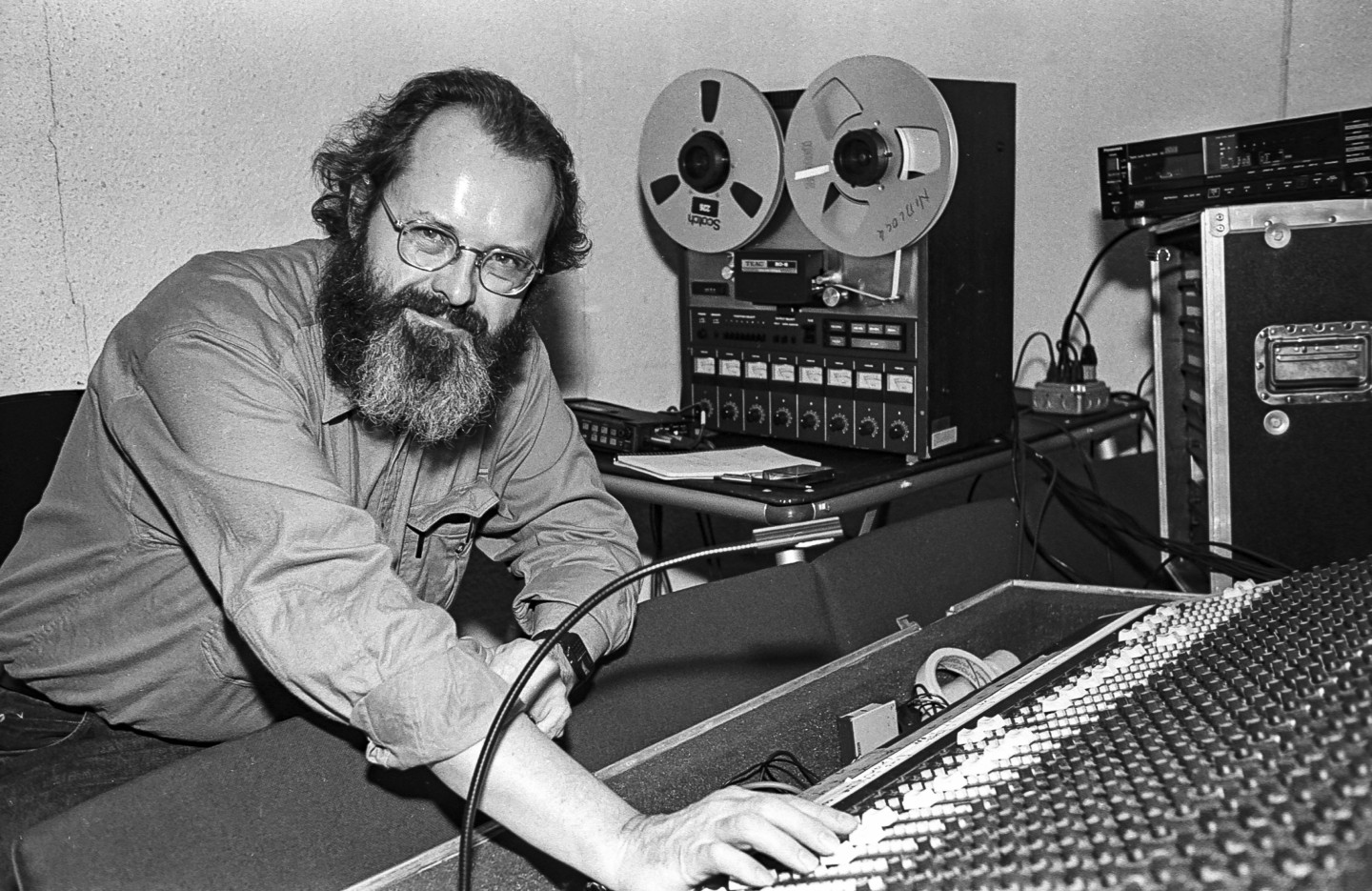Listening to Niblock the wrong way
A personal guide to grappling with the work of drone luminary Phill Niblock, who died at 90 this week.
 Phill Niblock in 1991. Photo by Jack Vartoogian/Getty Images.
Phill Niblock in 1991. Photo by Jack Vartoogian/Getty Images.
Phill Niblock was notoriously resistant to analyses of his art. The composer and filmmaker, who passed away this week at 90, made the purest form of minimalism. His musical compositions consist of ultra-extended notes with no rhythmic components other than dynamic swells and recessions, existing outside of tonality and time; and his films mainly focus on non-narrative depictions of manual labor as a study in movement, nothing more or less. Therefore, whatever socio-emotional response his work elicits in listeners and viewers are theirs to bear alone — or, as he once put it in an interview (found at the end of the video below), “What you perceive is, in some sense, your problem, and what I intend has little to do with that.”
It’s because of this apathy to interpretation, not in spite of it, that Niblock’s intermedia art has the power to inspire personal revelations. This is not to say his works are blank sheets, ripe for projection; his compositions are oceanic, layering tracks upon tracks of held tones that resonate at marginally different frequencies until their overtones converge like crashing waves.
Deep listening to Niblock’s recordings (in Pauline Oliveiros’ sense of the term) should not be entered into lightly; it can be an annihilating experience, similar to staring at the dense masses of color in a Rothko painting. For the vast majority of us without the intense discipline needed for this process, though, much can be gained from listening to Niblock the wrong way, too: The bottom of the ocean is an impossibly dark place, but its surface is still reflective of what’s above it. Even at its frothiest moments, it refracts visible light into its core components, creating rainbows.
Those of us who lack Tom Cruise and Kate Winslet’s ability to hold their breath for inhuman periods of time will need to breach the surface of Niblock’s music at points when listening, and it’s then that our focus will start to drift. While not the most mindful method, a permissive approach to this drifting can take us to fascinating and scary places.
When played at the correct volume — Niblock always asked that his music be broadcast at noise-complaint levels, and it is our duty to honor the requests of the dead — Niblock’s drones are not “ambient” in the way Eno’s are, for instance. Face to face with the horror of 32 flutes or didgeridoos or hurdy-gurdies blasting simultaneously into your ears at frequencies fractions of hertz apart, it’s difficult to think about groceries or dinner reservations or celebrity gossip. Succumbing to the thought spirals brought on by such intense stimulation can have the clarifying force of a near-death experience, providing us with fleeting opportunities to see ourselves as we truly are.
Of course, none of this was Niblock’s “problem.” Across seven decades, he approached his work simultaneously with a childlike spontaneity and the workmanlike efficiency of the motions he showed in his films. It would be silly to contend that Niblock’s profession has much to do with plowing a field or gutting a fish; but these habituated, almost unconscious actions informed his later work, at least, as much as La Monte Young and Morton Feldman’s foundational minimalist compositions did.
Those who knew Niblock have described him in the days since his passing as a wryly hilarious character with a deep compassion for his fellow man — as evidenced by his prolific mentorship and collaboration, and the love of community that led him to open the doors of the SoHo loft he moved into in 1968 as a testing and cross-politionation ground for like-minded artists. This warmth suffused his practice, so that even in his unwavering commitment to the principles of his work, his art remained a welcoming space.
The only effect Niblock acknowledged hoping his music and films would have on audiences was that they be detached from time while they listened and watched. These rare, unstuck moments are the kind that let us lose and find ourselves.